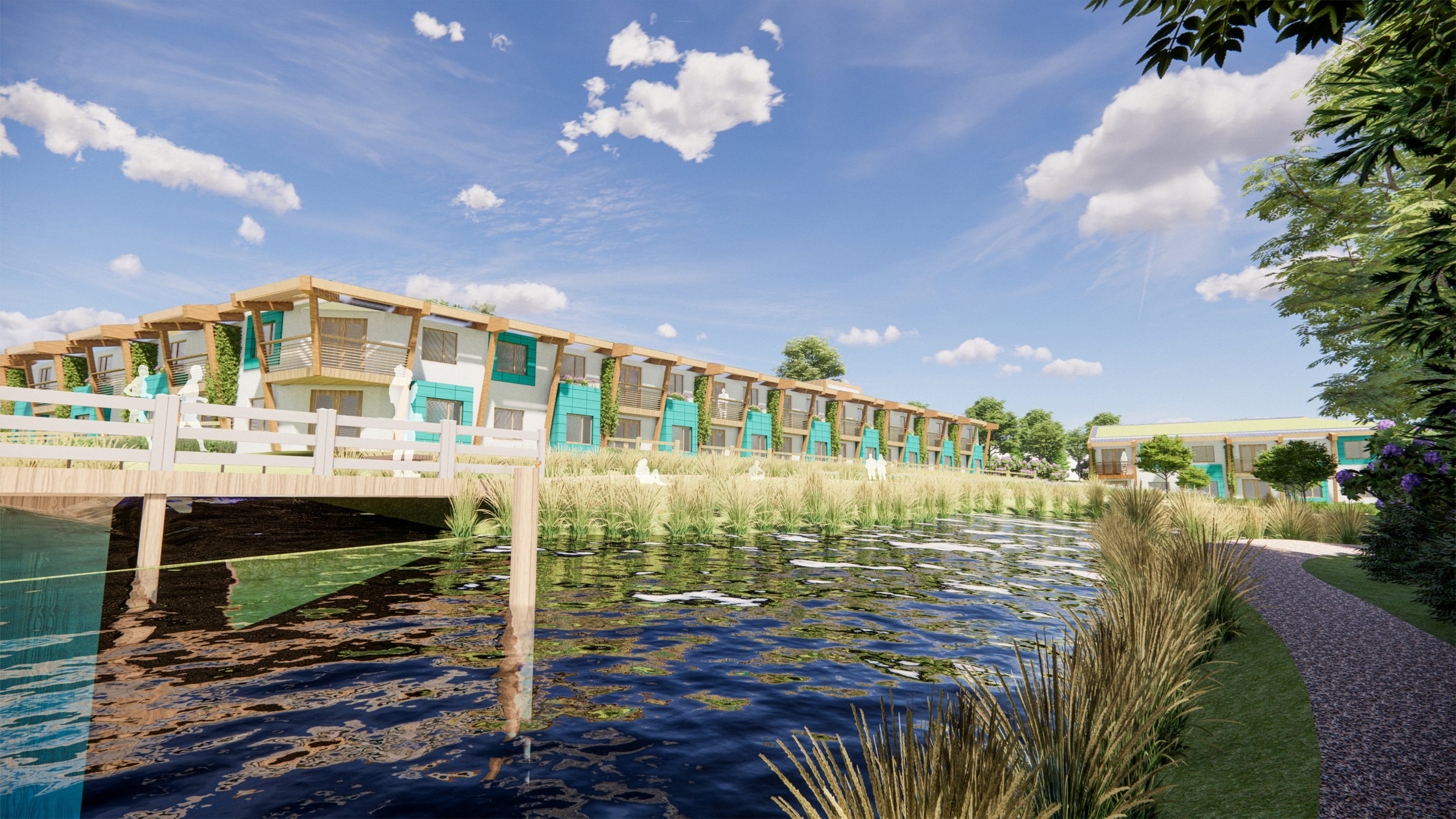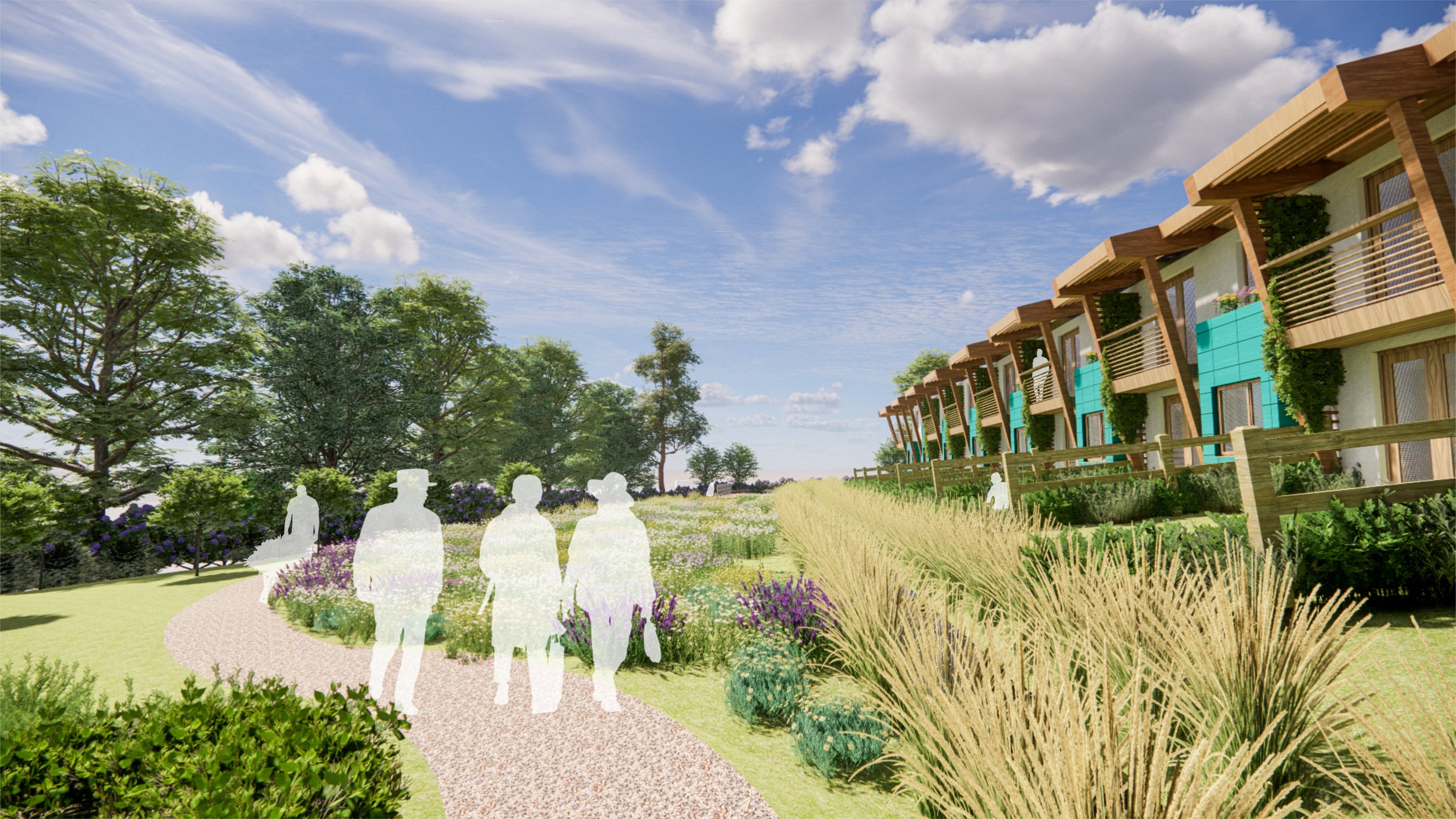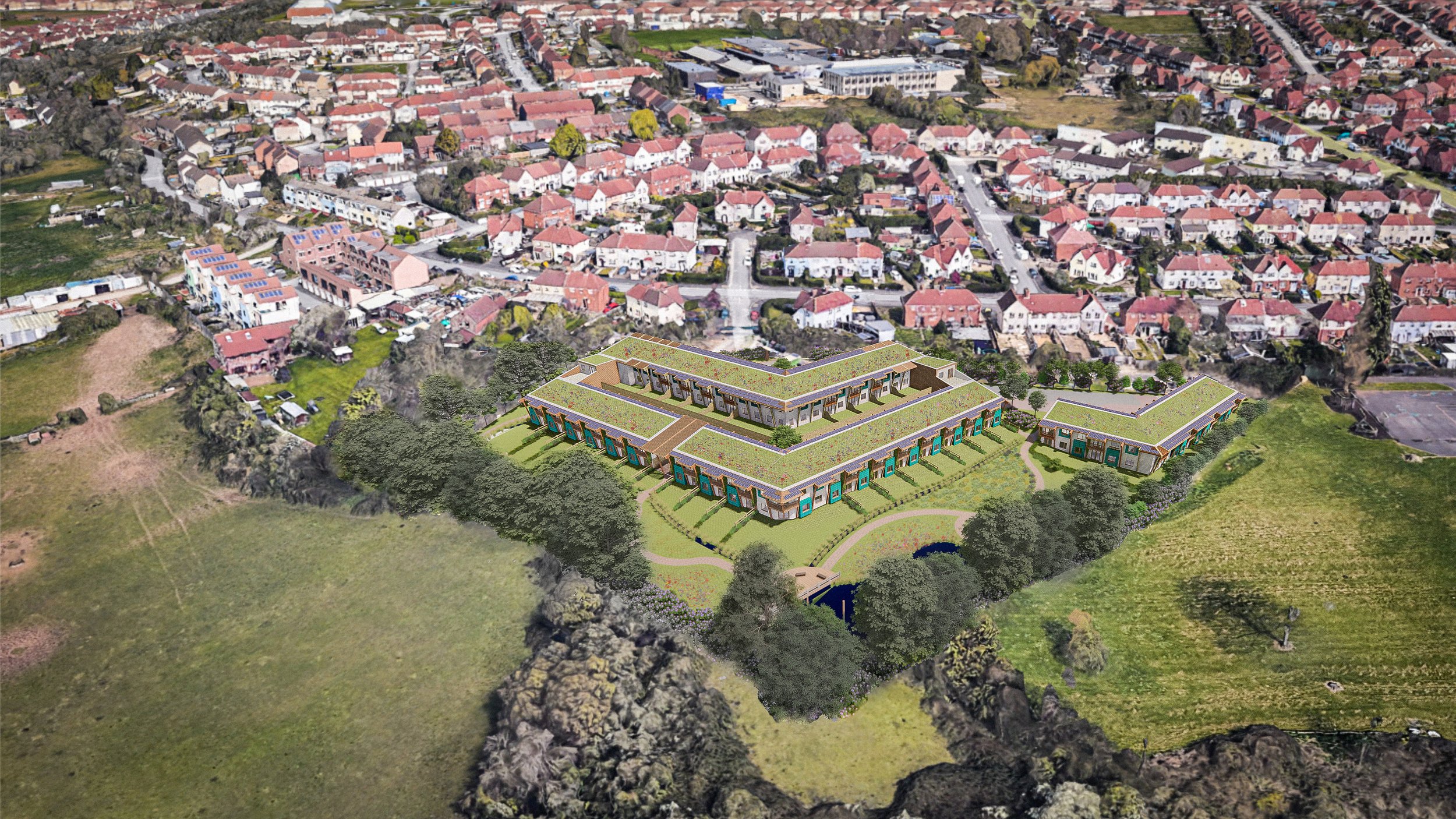gcp are delighted to announce that we have been shortlisted in the Novers Hill Design Competition and will move forward to Stage 2 of the process. Below we share some of our process and considerations when appoaching a new scheme.
Background
Goram Homes, in partnership with the Bristol Housing Festival, launched a design competition on 2nd March 2023 for a new housing development in Knowle West.
Situated just off Novers Hill, the brownfield site bounds the ecologically significant Western Slopes, with fantastic views over Southwest Bristol.
Having previously worked with Goram Homes to report on and reduce their whole life carbon emissions, we jumped at the chance to produce a sensitive, low carbon exemplar design for the Knowle West community.
Our Process
Context is always important, but especially on such an ecologically significant site. Our process started by analysing the site from an ecological, social, geographical and historical point of view.
This allowed us to identify the areas which could be developed whilst limiting any negative impacts on existing habitats. The brownfield elements of this site offered an obvious development opportunity due to the level topography and lack of ecology.
Taking the developable area, we could carve out service routes and ancillary spaces, leaving the most suitable areas for the proposed dwellings.
Working with a concept massing allows many ideas to be tested at a site-wide level to investigate their suitability. We took this opportunity to adapt the form to better make use of the site’s natural resources such as sunlight and views.
Retaining a connection between Knowle West and the Western Slopes was a key part of integrating this development into the existing community. To encourage this, we chose to slice through the massing to form a physical link between the wonderful green spaces and the wider community.
Creative stacking of gardens allowed us to achieve the required housing densities without damaging any further green space. This stacking also made the most of natural daylighting and views.
Our Team
We selected a competition team with a wide ranging but complimentary skillset to efficiently deliver this competition entry.
Part 2 Architectural Assistant: Matt Taylor
The core team of Matt B, Matt T and Owen developed our design under the excellent stewardship of Sarah. Regular concept discussions between the core team allowed for speedy testing and evolution of ideas. Concepts were then presented to the wider office during several design reviews in our pin-up space, which helped to hone the proposal and focus the mind.
Holistic Design
We pride ourselves on being able to take projects from the first sketch all the way through to delivery. Part of this is thinking ahead and making sure we consider the detail within the big picture. Whilst this was a Stage 1 design, we wanted to ensure that buildability, sustainability and affordability were all considered to ensure smoother development as the design progresses. It is much easier to design in efficiency at an early stage than try to adjust a poor design further down the line.
In developing our submission, we considered:
Whole life carbon emissions by improving thermal performance, choosing low carbon materials and maximizing solar gains
Materials to allow for ease of construction, minimal ecological disruption and easy airtightness
Going beyond biodiversity net gain by retaining as many habitats as possible, enhancing existing grasslands and planting trees/vegetation to offset carbon emissions
Net Zero emissions in operation through an efficient form, fabric first design and large solar PV arrays
Affordability by eliminating unnecessary junctions/details, minimizing energy/running costs and reducing the overall building mass.
The Submission
Detailed site analysis and holistic design allowed us to generate an accurate impression of how the development could look.










